I’ve challenged myself to try twelve new outdoor (and outdoor-adjacent) activities in 2025 to get out of my comfort zone and have some new adventures. This is a recap of one of those attempts.
I only learned about the lunar eclipse a couple days before it happened. While the dates of celestial events might be common knowledge to others, I’m consistently out of the loop. When I do belatedly learn about one from an off-hand remark or local news headline, I’m left scrambling to get out of Chicago’s haze of light pollution before the ephemeral moment passes.
I still regret1 not making the drive to the path of totality for last year’s solar eclipse, so my search for a campsite this time began faster than I could say blood worm moon2. Browsing through the options in the Southern Kettle Moraine State Forest for spots with limited tree cover, I realized that a late night staring skyward would be perfect for completing one of my 2025 adventure challenges. This was my opportunity to sleep under the stars without the rainfly on my tent!
That decision changed the math a bit on what I was looking for in a campsite. Now not only did I want a good view of the eclipse, but also enough privacy so my sleeping body wouldn’t be on display to anyone walking to the pit toilet in the middle of the night. I landed on a site set on a small hill away from the campground road. It was a 285 step walk from my car to the site and the only view I had of my nearest neighbor was the occasional and distant flash of a headlamp.
Turned out it was also an amazing spot for the sunset.
As I settled into my camp chair to watch the sky turn orange, a new thought popped into my brain: where exactly would the moon be during the eclipse? I had minimal tree cover on the lake side of my site, but the canopy was denser than I had wanted. Having never taken an astronomy class, I was fuzzy on the details of the moon’s path and how high it would be in the sky this close to the spring equinox. There was little I could do about the potential lack of visibility or my dearth of knowledge about all things astronomical at that point, so I decided to let it be a surprise and turned back to reading my book3.

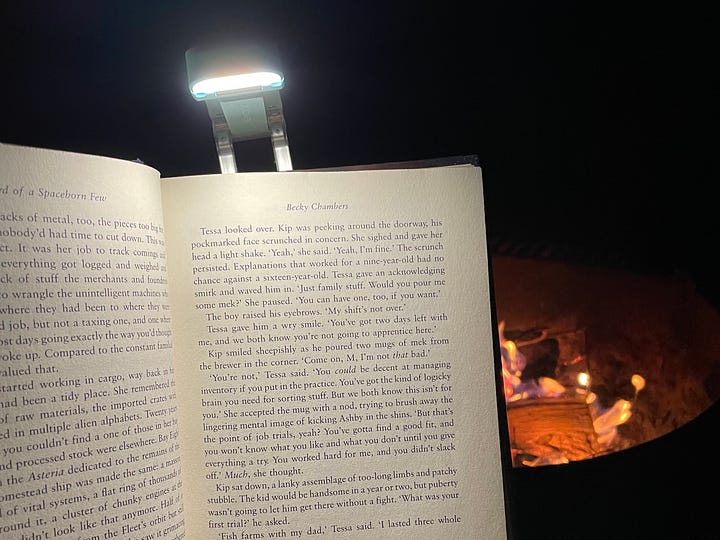
Throughout the sunset hour, I followed my typical routine of making five thousand trips to my tent until reaching an appropriate level of comfort around my modest fire. Sifting through the gear piled on my sleeping pad in search of my book light and warm socks, I marveled at how easy it was to locate items with a birds eye view through the mesh ceiling. There was no crouching in the vestibule or bonking myself on the head with my hanging tent light and I only needed to unzip one zipper to get inside! Easier access to the tent became the first item in the pro column for skipping the rainfly.4
Even so, the idea of sleeping exposed to the elements and the eyes of every passerby—animal or human—still made me nervous. As the light faded, the black mesh of my tent blended further into the background. Would a deer be able to see and avoid it or would I wake up under the crushing weight of a hoof?5 I was glad that a friend would be driving over to join me after work. If I wasn’t going to have the security blanket of a thin piece of opaque fabric, at least there would be someone in the next tent over.
That thought buoyed me until the first text came in the waning moments of civil twilight—a work emergency was delaying his arrival time. A few hours later, running late turned into too late to make the trek over. I was going to do this challenge solo, after all!
I put off getting into my tent until after midnight. Sitting by the last embers of my fire somehow felt more protected than retreating under the dome of mesh. However, cold feet finally drove me inside where I snuggled deep under my down quilt6. From that reclined position, I instantly wondered why I hadn’t tried this sooner—staring up at the sky from my sleeping pad felt like I was in my own mini observatory!
Over the next hour of waiting for the eclipse, I realized my earlier concerns had been unfounded. No deer stampeded past me. In fact, the only animal curious enough to come near was a chipmunk who bolted away at the mere lift of my head. Rather than feeling exposed, I felt connected to the woods around me. The sound of creaking branches no longer sent a shiver up my spine because I could glance up and confirm that there were no widowmakers above my head. The small creatures rustling in the leaves could be identified before my imagination turned them into bears. Only when gusts of wind blew unimpeded across my face did I miss the solid layer of my rainfly.
The brightness of the full moon noticeably decreased preceding totality. I watched the shadows change around me and struggled to keep my eyes open until the main event. Luckily, I didn’t have to coax myself out of my warm nest at 1:30am to see the sky—my vantage point was already as good as I was going to get! I unzipped the mesh door and stuck my phone outside to capture a (not very good) photo of the red moon before rolling over to fall asleep.
I woke the next morning to a rumble of thunder and dark clouds. Tentatively, I reached my palm up to feel for rain. Had I just dreamed up the sound? I wandered over to the pit toilet, debating whether to pack up camp or just go back to sleep. A second, louder rumble soon answered my question, so I draped the rainfly over the mesh to protect my down quilt and headed to the car to retrieve my packing cubes.
Typically, I would relish a slow morning dozing in my tent to the steady patter of rain. However, this night was about challenging myself to something new and I was reluctant to continue my sleep under the protection of the rainfly for fear that it would add an asterisk to an otherwise successful endeavor.
By the time I had packed up my gear, the storm clouds were just wisps in the sky and the threat of precipitation had passed. I pulled out my stove and watched a pair of sandhill cranes squawk and flap across the lake as I waited for water to boil. Soaking in the scene, another thought flitted through my brain: if I could stargaze from the comfort of my sleeping pad, perhaps I could also partake in early morning birdwatching from the same position. I suppose that’s a challenge for another day!
I’ve realized that most of my astronomical outings are a result of regret after missing a previous event. After all, that’s how I ended up sitting on a beach last May watching the northern lights:
“Blood moon” refers to the red color of the moon during an eclipse and a “worm moon” is the full moon that happens in the month of March.
This trip’s book was Record of a Spaceborn Few, the third in the Wayfarers series by Becky Chambers. A past essay discusses how I choose what to read on camping and backpacking trips:
I did stash the rainfly and extra stakes at the foot of my sleeping pad, just in case.
I’ve previously written about how one of my biggest fears in the backcountry is a moose tripping on the guy lines of my tent and falling on me, so worrying about deer stepping on me is a natural extension of that:
As mentioned in a recent advice column, I made the switch from a sleeping bag to a backpacking quilt after waking up face down in the hood of a sleeping bag with my arms stuck out of reach of the zipper:






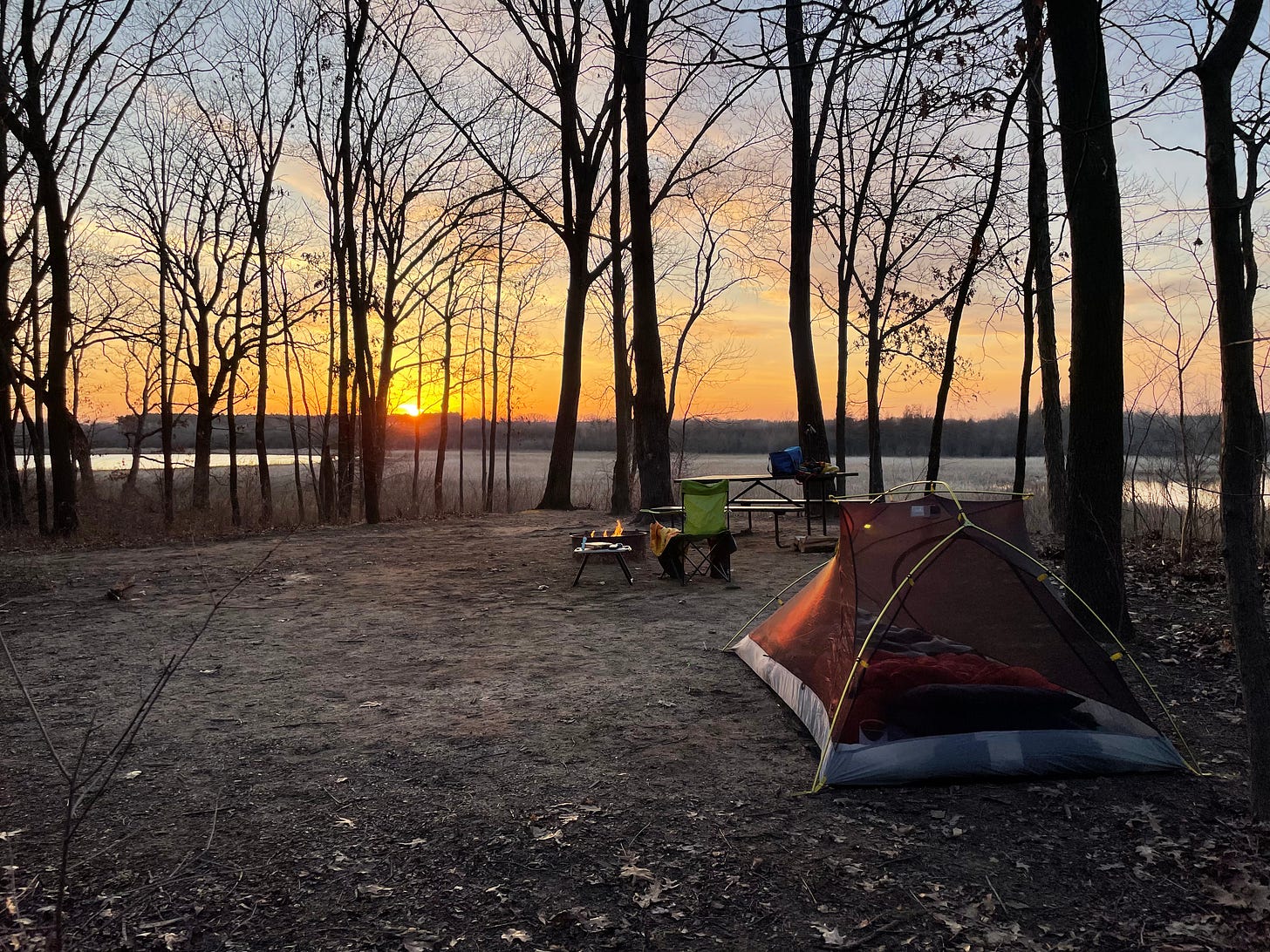
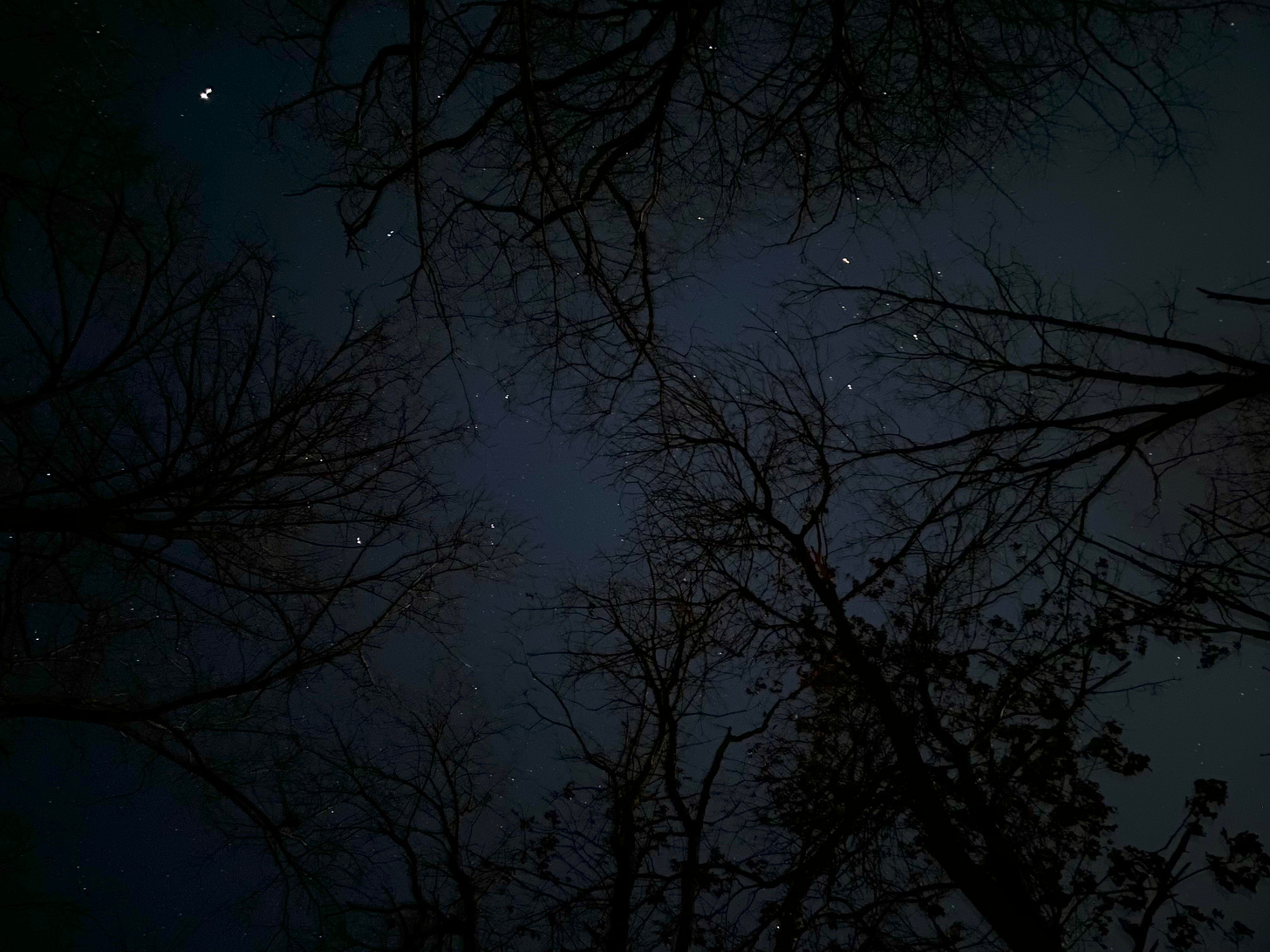
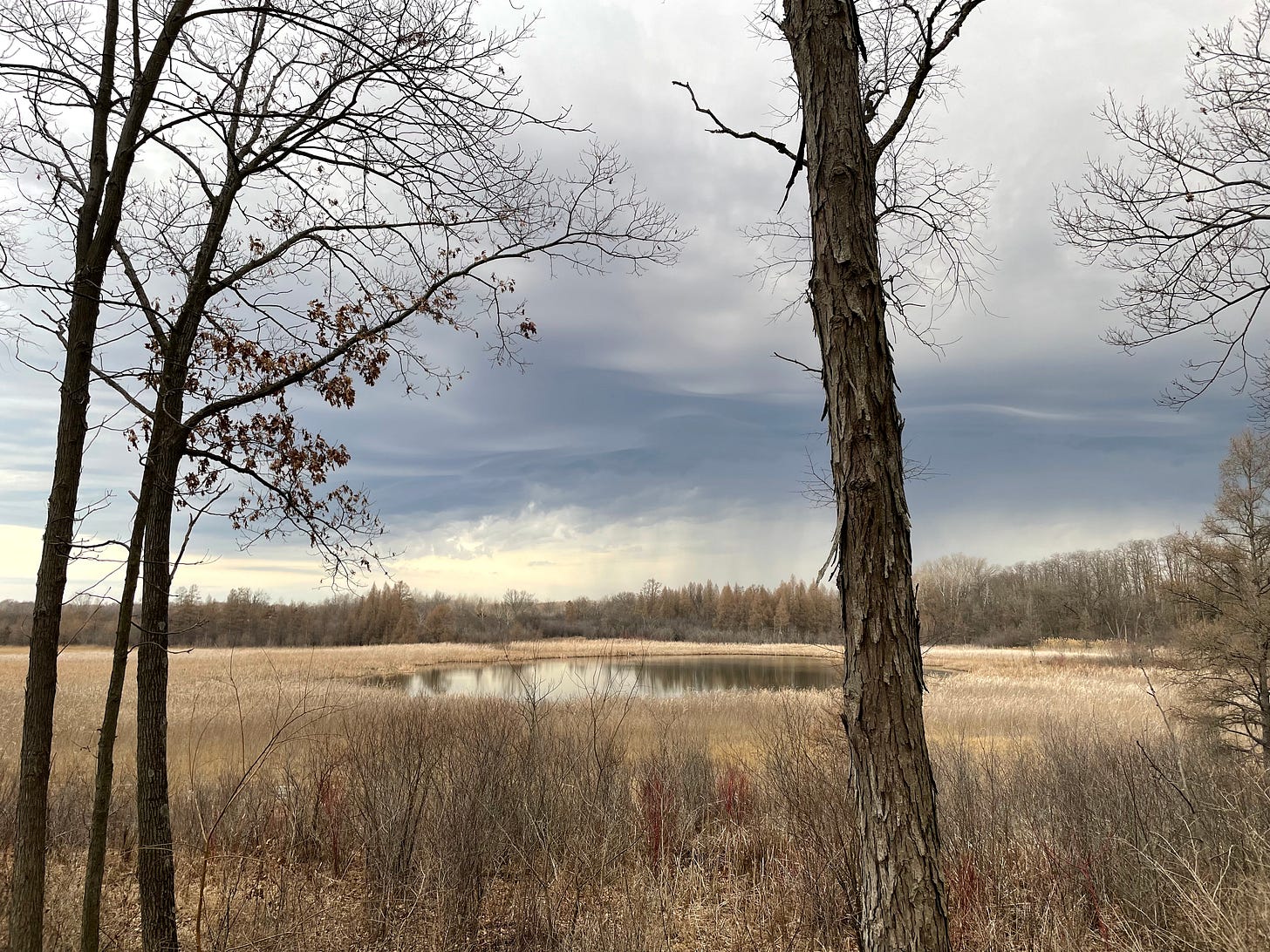
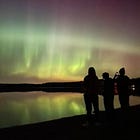

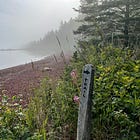

Awww! What a lovely night. Thank you for sharing.
I remember with great fondness the first night I slept under the stars. I woke to a large number of sheep grazing around me but none seemingly likely to tread on me.
Catching up with all the posts I've missed over the last few weeks...
Sounds like an amazing experience! Man, this makes me want to go camping (it's still too cold here, at least if you're like me and don't have a winter sleeping bag but a cold-sensitive body). Also, your writing makes me laugh! The thought of a deer stepping on you sounds kind of absurd but I can definitely relate.
Nice that you've been reading Becky Chambers too - I've just read A Psalm for the Wild-Built and am now curious about her other books.